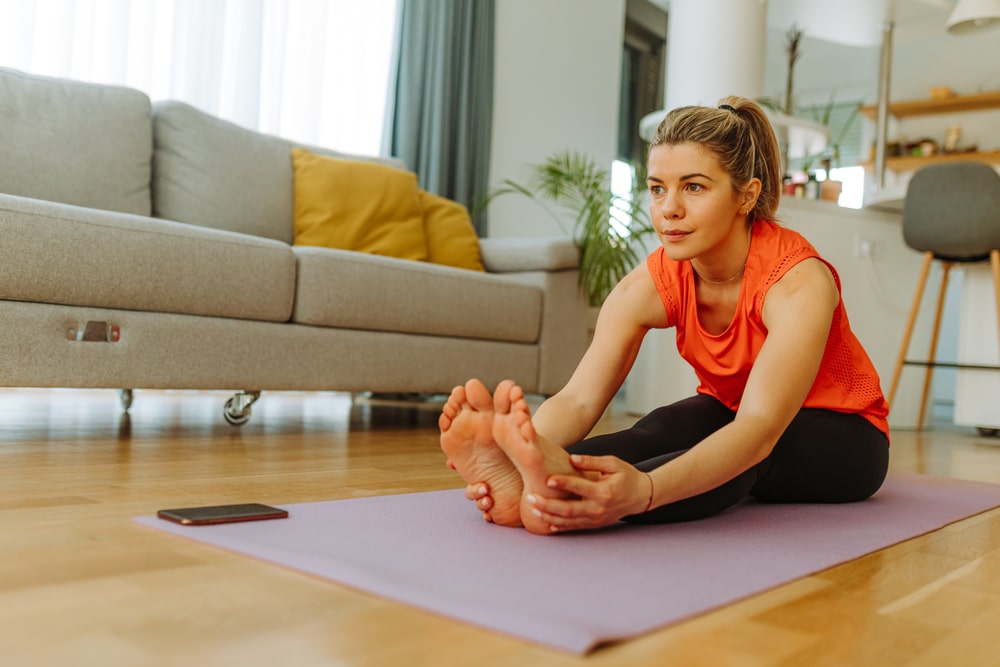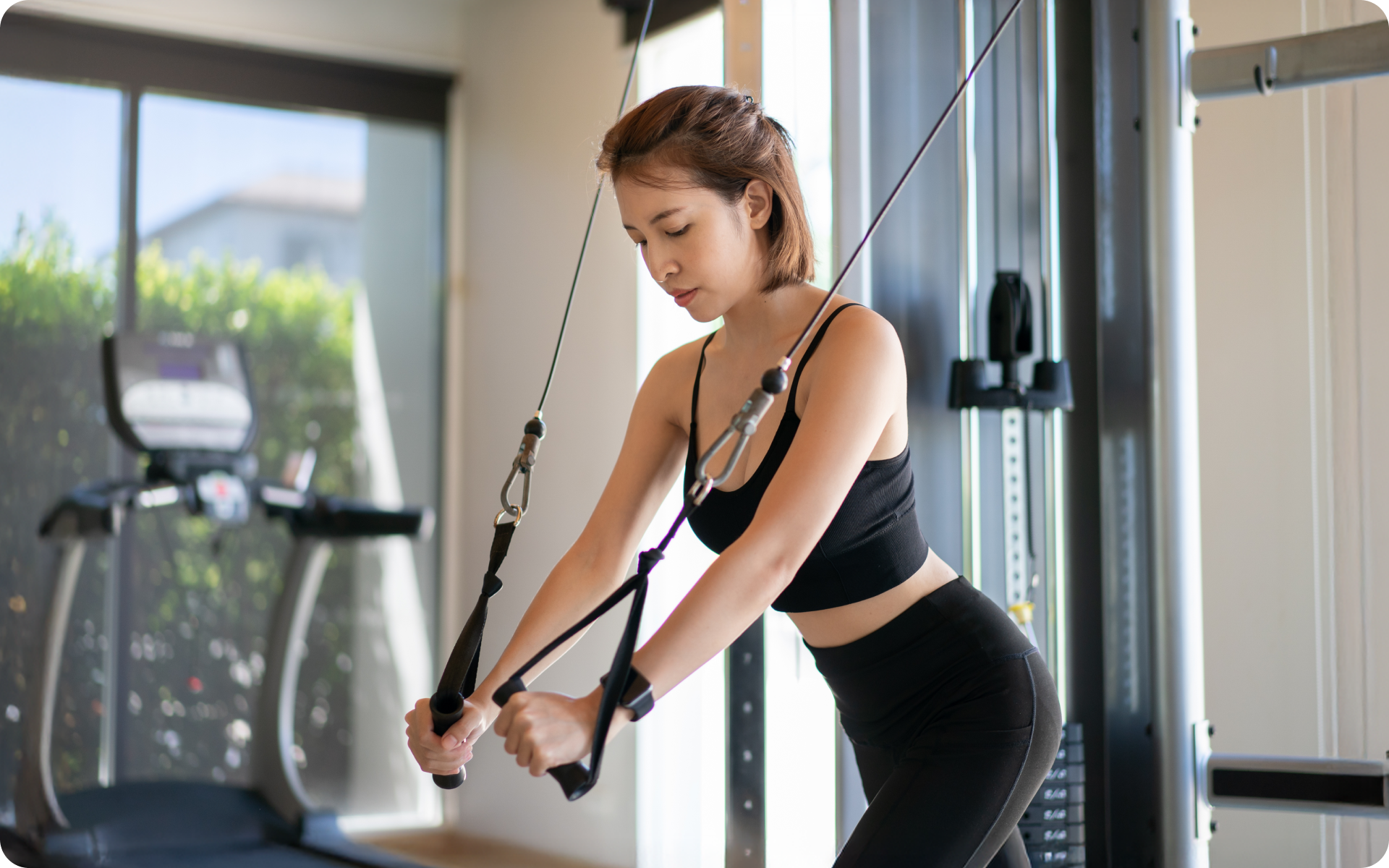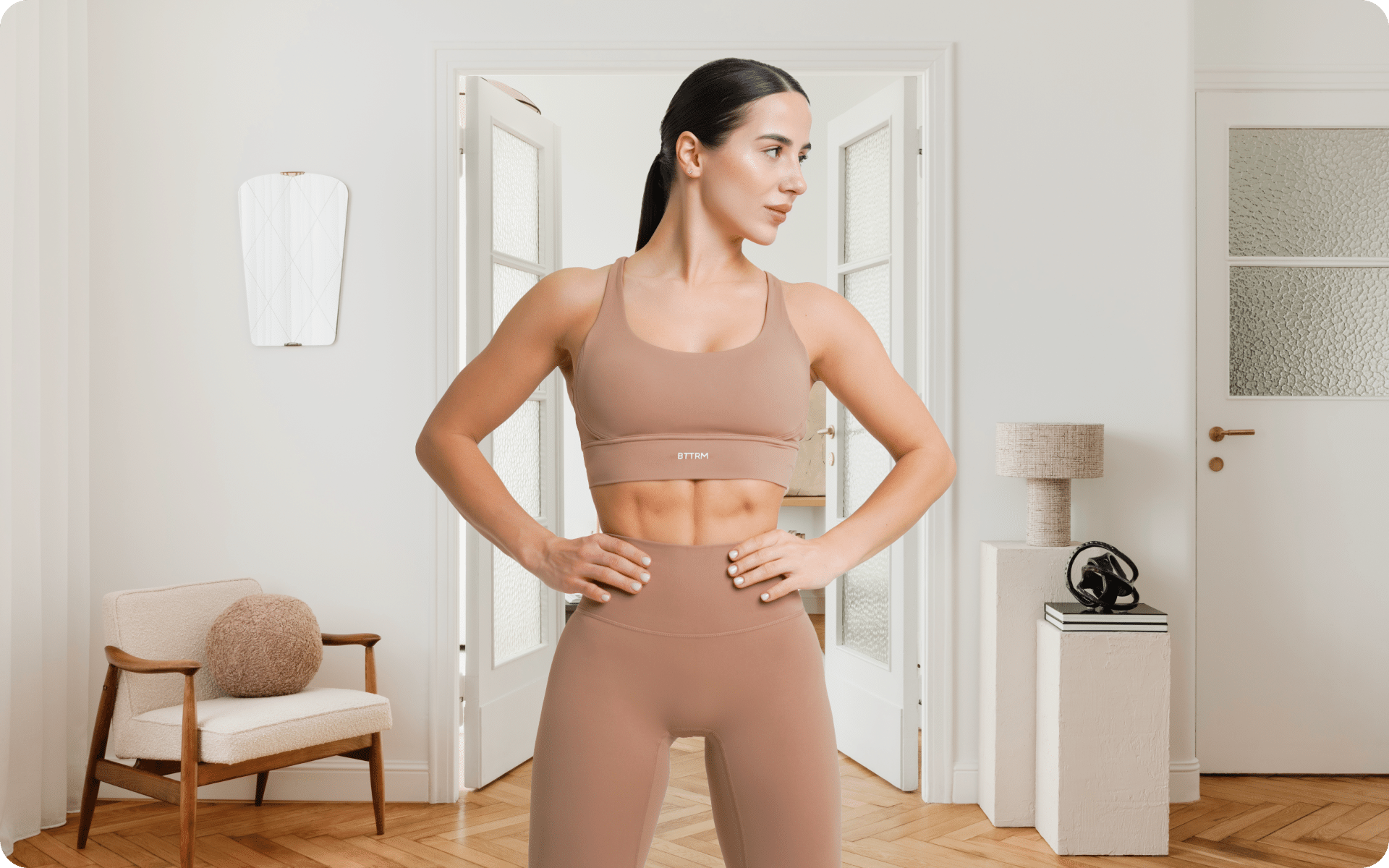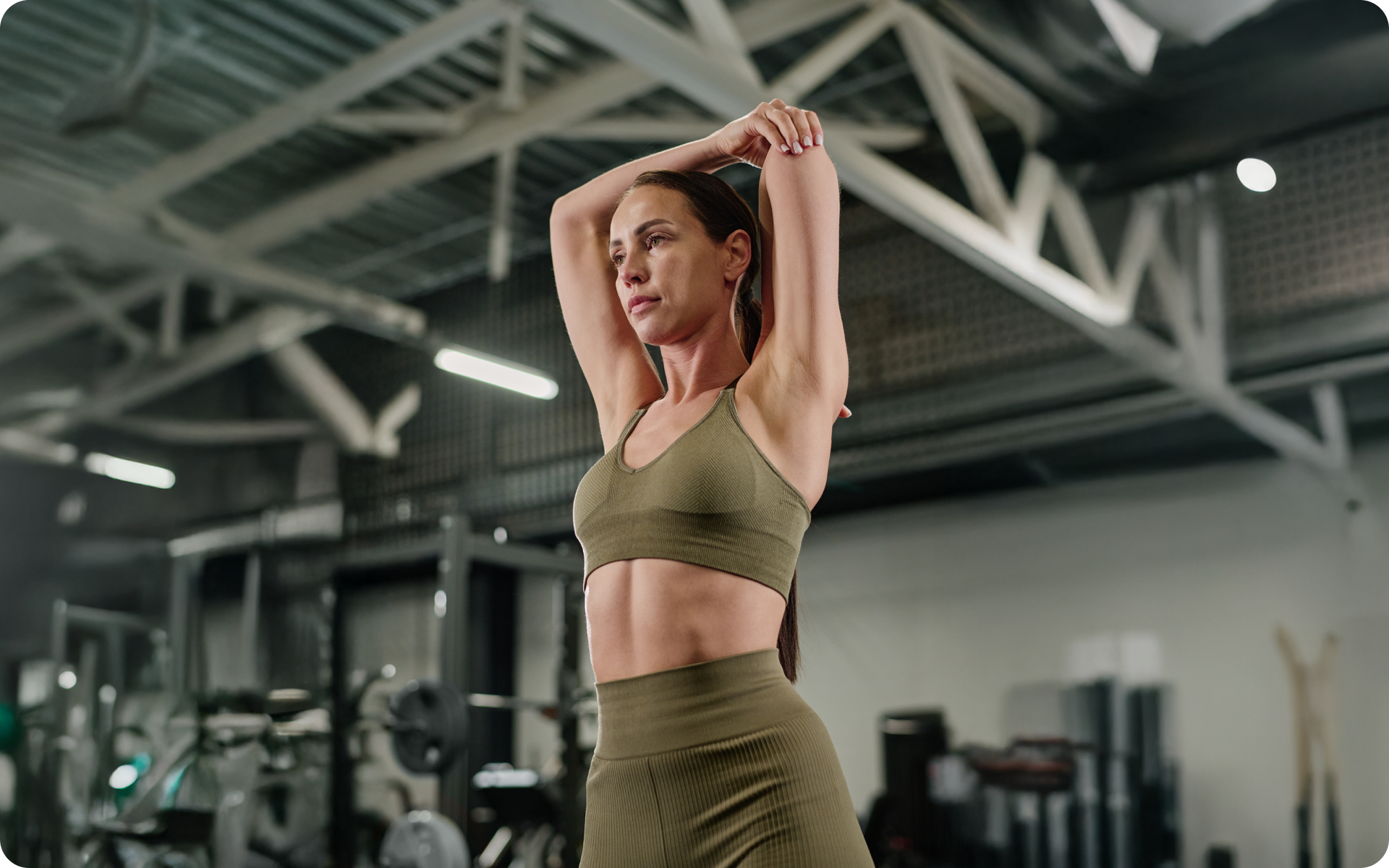Stretching makes up an essential part of a workout routine. Although we know that we should stretch, only a few of us include it in our workout routine or do it correctly. Stretching correctly will reduce the risk of you getting injured when working out and increase flexibility. And the good news is that it is never too late to begin stretching – or to start doing it properly.
Why Is Stretching Important Before Exercise?
Do I need to stretch before exercising? Well, you should always start exercising with a few stretches and warm-up workouts. But what exactly is the difference between stretching and warming up?
Stretching is when you hold a position for a prolonged period, usually 20 seconds or so. On the other hand, Warming up is a burst of light activities, such as jumping jacks, high-knee skipping, or a short jog. Both of them improve muscle elasticity and should be done before and after intense exercise.
However, it is essential to adequately stretch and warm-up all the muscles you will be using. Below are a few advantages you will receive when you sufficiently warm-up and stretch before exercising.
Lower Your Risk Of Injury
Before you hit the court (or the track or the field), you have to prepare your muscles. Many of our muscles contract when we are resting and are stretched during activities like running (1). When the shift from resting to high exertion is done too quickly, there’s a risk for injury – pre-stretched muscles can resist and handle stress better than unstretched ones (1).
Promotes Blood Circulation
The first thing stretching can do is increase blood flow to the joints and muscles, which improves your circulation of blood throughout the body and increases the transportation of nutrients (3).
Read More: How To Stretch Before Running: Getting Your Body Ready For The Miles Ahead
Increase Flexibility
Correct stretching will loosen the tendons and muscles, increasing flexibility during your workout (2). Increasing your flexibility may help you avoid injuries, improve your range of motion and stave off chronic issues such as arthritis.
Improved Performance
Increasing the flexibility of the muscles can improve your muscle strength, speed, and agility (6). And this may help with overall performance when it comes to anything physical (5).
Better Posture And Balance
Stretching your chest, shoulders, and lower back muscles may help better your posture and keep your back in better alignments.
How To Stretch Before Working Out?
Stretching will only help if you do it correctly. Also, take your time and don’t rush through the stretch as it results in poor form, potentially strained muscles, and incorrect breathing technique. Pay attention to your body’s response to the stretching since over-stretching could put stress on your muscles.
Before you begin pre-workout stretches, take 5 minutes for light cardio workouts like jogging and jumping rope to increase your blood supply. How extensive your stretching session needs to be will depend on your planned activity.
It would be best if you worked on every muscle group (most pre-workout stretches full body are for beginners). We will walk you through the vital pre-workout stretches that target particular areas and muscles of your body to add to your regular workout program from your arms to your legs.
Whether you’re a workout beast or just a beginner making your first foray into the world of fitness and dieting – BetterMe has a lot to offer to both newbies and experts! Install the app and experience the versatility first-hand!
Hamstring Stretches
Your hamstrings, the three muscles that help your knee move, can easily get tight after a strenuous workout. Stretching these muscles before and after exercising helps alleviate tightness and pain. Those with stiff knees and back pain sufferers can also benefit from a regular hamstring stretching routine. Below is a popular pre-workout hamstring stretch.
- Lie flat on the floor mat.
- Bend the right knee and firmly rest your foot on the mat.
- Next, loop a long towel under the left foot and use both hands to grab the ends.
- Pull-on your towel in order to lift your left leg off the floor\ground.
- Now do the same with your other leg.
- Repeat the workout at least 3 times each leg and hold for 30 seconds each time. Don’t overstretch – your limb or muscle should not be shaking.
Squatting is another common pre-workout hamstring stretch. Stand with the feet shoulder-width apart. Now bend the knees and lower yourself into a squat while still keeping your back straight. Try to hold the position for at least 15 seconds. Repeat the exercise three times.
Back Stretches
Warming up your back usually involves moving the posterior muscles, which include your lats and traps, and joints, specifically the spine, in different planes of motion. Below are back stretches to include in your next warm-up. Do each move for 30 – 45 seconds.
Remember that stretching doesn’t guarantee that your back won’t hurt since there are other causes of backaches than tight muscles.
Move 1: Standing bicycle
- Stand with your feet hip-width apart and hands behind the head.
- Lift the right knee up and then twist the upper body in order to bring the left elbow to touch the right knee. Now rotate the upper body to return to step one or starting position.
- Do the same with the left leg and continue alternating sides.
Move 2: Pelvic tilt
- Lie flat on the floor\mat with knees bent.
- Next, flatten your back against the mat by tightening the abdominal muscles and then bending the pelvis up slightly.
- Try to hold for 10 to 15 seconds.
- Repeat the warm-up workout.
Read More: Beginner Stretches To Level Up Your Stretching Game
Shoulder Stretches
If you have been exercising for a reasonable length of time, you have most likely experienced some shoulder pains and aches along the way. And this is normal because the shoulder joint is among the most common body parts of pain in weight training.
Although this is the norm, it shouldn’t be. As a lifter, you need to take care of your shoulders with correct stretches. Below are two good pre-workout stretches that will help keep your shoulders healthy during your sport and workouts.
Stretch 1
- Hold your left arm straight across the chest, and so your left hand is to the right of your body.
- Now grab your left elbow with your right hand and pull the arm across the body.
- Do the same with the right arm.
Stretch 2
- Sit on a mat and lean back on your arms.
- Push forward with your trunk while retracting the scapula, and you will feel the stretch in the shoulders.
Arm Stretches
Pre-workout arm stretches are beneficial for cardio exercises such as elliptical and jogging, sports performance, and weight-training workouts.
Try the arm swings stretch, which is one of the well-known stretches out there. Wrap your arms around as if you are giving yourself a tight hug and open them up wide.
Leg Stretches
Pre-workout leg stretches are important to your overall fitness because of the amount of stress placed on the legs during workouts. Whether you run or cycle, your legs need to apply force and touch the ground, so they need to be ready to perform at their peak.
Stretching your legs reduces leg cramps. The stretches also make your muscles more flexible, resulting in an increased range of motion. Below is one of the best pre-workout stretches for beginners that target the legs.
- Support yourself against a wall and keep your body nice and tall.
- Now swing the right leg back and forth, aiming to kick the foot higher each couple of swings, and feel out the stretch in your hamstrings, quads, and hip flexors.
- Do the same with your left leg.
- 10 swings per leg should show results.
Another nice leg stretch is a standing one.
Dropping pounds by the dozens without putting yourself through the wringer is everyone’s weight loss pipe dream. But what if we told you that the BetterMe app can make that happen? Keep yourself in prime shape with our fat-blasting workouts, delicious budget-sparing recipes, and body-transforming challenges with our app!
IT Band Stretches
IT band or iliotibial band are two phrases most runners hear throughout their training. That is because running can easily irritate the connective tissue that runs from the hip to the knee. If you are experiencing pain from the hip to the knee, your first line of defense should be to reduce the intensity of your workouts and know how to stretch before running.
The standing wall squat is one of the Iliotibial band stretches that will help reduce pain.
- Stand next to a wall with your hip-width distance apart and feet parallel.
- Position a foam roller between the wall and your right hip.
- Transfer the weight to the left foot and then lift the right foot off the ground.
- With a neutral spine, try to engage the core and do a single-leg squat, pulling your hips back while putting pressure into the foam roller.
Calf Stretches
Toe walks is one of the best pre-workout calf stretches you can add into your workout program to stretch the critical areas (lower calves, upper calves, and Achilles tendons) to prevent injury and better your performance.
- Stand tall with your hands on the waist and arms bent.
- Raise up onto your toes.
- Now walk slowly on your toes, rest, and repeat the workout.
You may perform calf raises instead.
Dynamic Stretching
There are two types of stretches: dynamic and static stretching. Dynamic stretching involves controlled, slow movements, such as high-knee jogging or walking lunges, and can be done during a warm-up. On the other hand, static stretching is holding a stretch for 10 to 30-second intervals (4).
Dynamic stretching is best done before a workout, while static stretching is best done after a workout to cool down the body muscles and help reduce or prevent soreness.
Conclusion
Remember, stretching before and after is a crucial part of any workout and shouldn’t be missed. It adds more goodness to a great workout session and might become your best\ favorite part of it. It is also important to be sure you are doing the right kind of stretches pre and post-workout.
Lastly, talk to your healthcare provider before starting a workout program, especially for those who have physical concerns that might be affected.
Get your personalized
meal plan!
DISCLAIMER:
This article is intended for general informational purposes only and does not address individual circumstances. It is not a substitute for professional advice or help and should not be relied on for decision-making. Any action you take upon the information presented in this article is strictly at your own risk and responsibility!
Consider trying this 20 Minute Full Body Workout at Home.
SOURCES:
- A randomized trial of preexercise stretching for prevention of lower-limb injury (2000, pubmed.gov)
- Dynamic stretching is effective as static stretching at increasing flexibility (2017, researchgate.net)
- Daily muscle stretching enhances blood flow, endothelial function, capillarity, vascular volume and connectivity in aged skeletal muscle (2018, pubmed.gov)
- Understanding the Difference Between Dynamic and Static Stretching (2020, clevelandclinic.org)
- Exercising to relax (2020, health.harvard.edu)
- The Effectiveness of PNF Versus Static Stretching on Increasing Hip-Flexion Range of Motion (2018, pubmed.gov)










